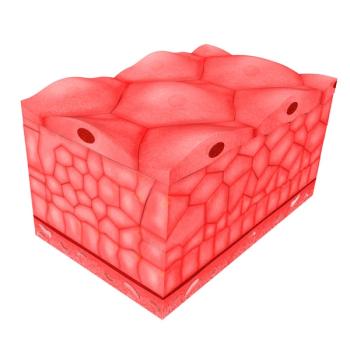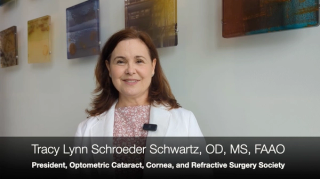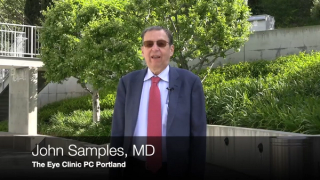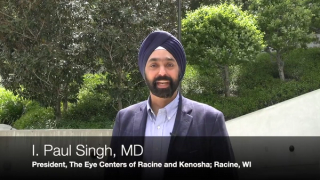
Comanagement
Latest News
Latest Videos

CME Content
More News

I am again reminding you that optometry has a renewed purpose in the management of our cataract and refractive patients.

A U.S. patent was granted to Gholam A. Peyman, MD, in June 1989 for a method of modifying the corneal curvature of the eye. The surgical procedure involved cutting a flap in the cornea, pulling the flap back to expose the corneal bed, ablating the exposed surface and then replacing the flap. The current procedure of laser assisted in-situ keratomileusis (LASIK) was not FDA approved until 1999.

Treating and managing chronic glaucoma can be rewarding as an optometrist. The frequency of office visits to monitor this chronic disease provides ODs an opportunity to develop a close relationship with their patients while providing medical eye care.

Researchers have found a significant correlation between depression and visual field loss in patients with glaucoma, according to a study in Ophthalmology.

In a recent wave of drug price increases that can only be explained by pharmaceutical manufacturers’ desire for profit maximization and which doctors and patients may call price gouging, the drug price war has been brought to the doorsteps of many eyecare providers. As optometrists are increasing their practice of medical optometry, patients are now calling their doctors about prior authorizations and unaffordable drug copays.

Cataract surgery is one of the most successful surgeries performed in the United States. By 2020, it is estimated the number of people having cataract surgery will double, and by 2030 it will triple. The optometrist’s role in comanaging these patients will be of critical importance. Developing and maintaining your post-operative clinical care skills is imperative.

When a colleague or a patient utters the phrase “intelligent design” (ID), it is challenging for me to not roll my eyes as far back as some patients’ contact lenses get lost up there. Honestly, if we really think about it, the design of the ocular system is far from intelligent.

A new study recently published in Retina found that communication between a diabetic patient’s eyecare provider (ECP) and primary care physicians (PCPs) increased the likelihood that the patient would make and keep her eye exam appointment.

Historically, optometry and ophthalmology have worked in parallel universes with very little room to cross paths. Yet, this model didn’t provide the appropriate care necessary for our aging populace.

At present we are limited with our ability to treat presbyopes. Sure, we have progressives and multifocal contact lenses; however, from a surgical standpoint, monovision corneal refractive surgery is limited, and clear lens extraction is often extreme for emmetropes.

Cataract surgery has entered that technology zone enabling surgeons the opportunity to provide sutureless and bladeless surgery, in vivo axis orientation and aberrometry measurements, and now, remove the drops from this pervasive procedure.


Last month, I wrote about diagnosing my father-in-law’s branch retinal artery occlusion (BRAO) and then teaming up with a vascular surgeon for his subsequent carotid endarterectomy. After the successful “slam dunk” surgery, the nurse who discharged him advised him to “go to the ER” should he have any changes in vision, and in the process, dropped the ball.

It’s March Madness time, and the next few weeks will take college basketball fans on a roller coaster ride of synchronous alley oops and ill-timed, dribble-off-the-foot turnovers. I’m always looking for an apt sports metaphor to help pass the time and get me through the day. A guy can dream, can’t he?

Modern ophthalmic cataract surgery now employs sophisticated techniques to improve outcomes and patient satisfaction. This includes surgical systems providing better control, lasers to perform manual techniques, and intraoperative evaluation to evaluate surgical endpoints before the patient leaves the operating room (OR).

Years ago, I realized that a cataract is anomaly of the ocular system that should be eradicated at its earliest stages. Frankly, if you were in a relationship that was not going well and was destined to keep getting worse, would you stay?

When it comes to acronyms, there is no ophthalmic sub-specialty that compares to corneal surgical procedures. For example, let’s take a look at corneal transplants and therapeutic surface treatments. Among KLAL, DALK, PLK, LK, DLEK, DSEK, DSAEK, DMEK, and DMAEK, there is no wonder why there is so much confusion.

During the American Academy of Optometry's Academy 2014, Josh Johnston, OD, clinical director, Georgia Eye Partners, Atlanta, presented five pearls for successfully comanaging premium intraocular lens (IOL) patients.

Glen Steele, OD, FAAO, recently gave a presentation at the American Academy of Optometry's Academy 2014 in Denver, CO, on the questions to ask and tests to conduct when considering vision therapy for a patient.

I recently read that the restaurant in Tampa, which licenses the name Hogan’s Beach from the professional wrestler Hulk Hogan, is under fire for its controversial dress code. One area of concern for us optometrist is the fourth item on this controversial dress code: “No excessively baggy attire.” You may be questioning how this is germane to comanagement or, frankly, what this has to do with the doctoring of the eyes.

Cataract surgery demand is set to grow as an increasing amount of baby boomers retire and enter old age, but the eyecare profession is not ready for the coming demand, says Dr. David Geffen, OD, FAAO.

The lines between a surgical management and non-surgical management are more defined in states where surgery is performed by only ophthalmologists. However, the non-surgical management of our patients can be a little blurred and subject to your own personal acumen.

Since the baby boomers have boomed, the syneresis process seems to be moving as fast as the polar ice cap is melting. I understand the sudden appearance of a large dark object is worrisome and needs to be managed in our offices. Yet, can we overdo it? What is really the most appropriate time frame to get these patients in for a look and when should they be seen again?

The use of a femtosecond laser during cataract surgery is now an option for your patients, and you need to be comfortable answering patient questions and co-managing this procedure.

The end game of any comanagement arrangement is providing patients with the best possible care they can receive. This seemingly obvious conclusion is sometimes clouded by the perception that optometry and ophthalmology are not working in tandem, and patients may be left confused and unsure about what is the best option for their ophthalmic care.






















































.png)


